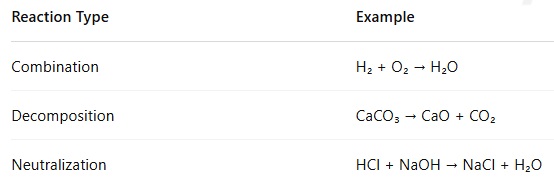~~~~~~~~~~~~~~~~~~~~~
Grade 9 is a foundational year in a student’s academic life. It introduces complex scientific concepts that lay the groundwork for higher education. Having well-organized, easy-to-understand notes can help students:
Grasp difficult concepts quickly.
Revise efficiently before exams.
Retain information longer through visual aids like diagrams and charts.
Whether you're tackling physics formulas or decoding chemical reactions, notes are your secret weapon.
Physics in Grade 9 introduces the basic principles that explain how the world around us works. Here's a breakdown of key chapters and concepts:
Uniform and Non-uniform Motion
Distance vs Displacement
Speed, Velocity, and Acceleration
Newton’s Three Laws of Motion
Types of Forces (Frictional, Gravitational, Magnetic)
Balanced and Unbalanced Forces
Newton’s Second Law: F = ma
Definition of Work and Units (Joules)
Power = Work/Time
Kinetic and Potential Energy
Law of Conservation of Energy
Wave Motion: Longitudinal vs Transverse Waves
Frequency, Wavelength, and Amplitude
Speed of Sound and Echo
Laws of Reflection
Refraction through Glass and Water
Real and Virtual Images

Include diagrams like ray diagrams, motion graphs, and circuit symbols for enhanced understanding.
Biology explores living organisms and life processes. Here’s what to focus on:
Prokaryotic vs Eukaryotic Cells
Plant vs Animal Cells
Organelles (Nucleus, Mitochondria, etc.)
Meristematic and Permanent Tissues in Plants
Muscular, Epithelial, Connective, and Nervous Tissues in Animals
Classification Systems: Kingdoms, Phyla
Binomial Nomenclature
Infectious vs Non-Infectious Diseases
Pathogens and Their Transmission
Prevention and Immunization
Types of Resources (Air, Water, Soil)
Pollution and Its Control
Use labeled diagrams for:
Cell structures
Tissue types
Human body systems (Digestive, Respiratory, etc.)
Chemistry explains the makeup of matter and how substances interact.
States of Matter
Properties: Compressibility, Fluidity, Rigidity
Dalton’s Atomic Theory
Atomic and Molecular Mass
Mole Concept
Types: Combination, Decomposition, Displacement, Double Displacement
Indicators of Reactions (color change, gas formation)
pH Scale and Indicators
Strong vs Weak Acids and Bases
Neutralization Reactions
Protons, Neutrons, Electrons
Atomic Number and Mass Number
Bohr’s Model

Computer Science introduces students to the digital world and basic programming.
What is a Computer?
History and Evolution
Input and Output Devices
System Software vs Application Software
Examples: Windows, MS Word, Antivirus
Introduction to Scratch, BASIC, or Python
Variables, Loops, and Conditionals
Simple Program Examples
Basics of the Internet
Search Engines, Email, and Cloud Storage
Safe Internet Practices
MS Word: Formatting, Tables
MS Excel: Formulas, Charts
MS PowerPoint: Slides, Transitions
Use visual flowcharts for logical understanding. Sample Excel formulas like =SUM(A1:A10) can help in practical learning.
Use Headings and Bullet Points
Highlight Keywords
Draw Clear Diagrams
Use Sticky Notes for Difficult Concepts
Summarize Every Topic in Your Own Words
You can find reliable Grade 9 notes on:
Khan Academy
BYJU’S Learning App
Q1. Where can I download free student notes of physics for Grade 9?
You can download them from NCERT, BYJU’S, or educational YouTube channels offering PDF resources.
Q2. How do I make my science notes effective?
Summarize concepts in bullet form, use diagrams, and highlight key formulas.
Q3. Are online notes better than textbooks?
Online notes help for quick revisions, but textbooks provide in-depth explanations. Use both for best results.
Q4. Which apps offer free science notes for Grade 9?
Apps like Toppr, Vedantu, and BYJU’S offer free and paid note bundles.
Q5. How can I remember complex biology terms?
Use mnemonic devices, flashcards, and regular revisions to reinforce memory.
Q6. What should I include in computer notes for Grade 9?
Basic computer parts, software types, programming concepts, and practical MS Office usage.
Grade 9 marks a turning point in a student’s journey toward mastering science and technology. With the right notes in hand, you'll not only simplify your study routine but also build a solid foundation for Grade 10 and beyond. Keep your notes neat, update them regularly, and use online resources for revision.